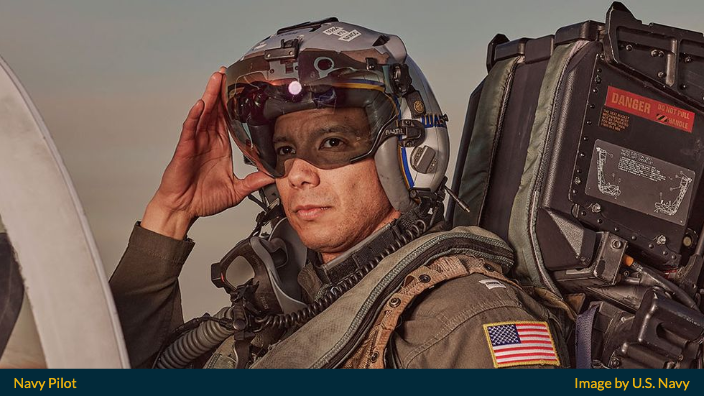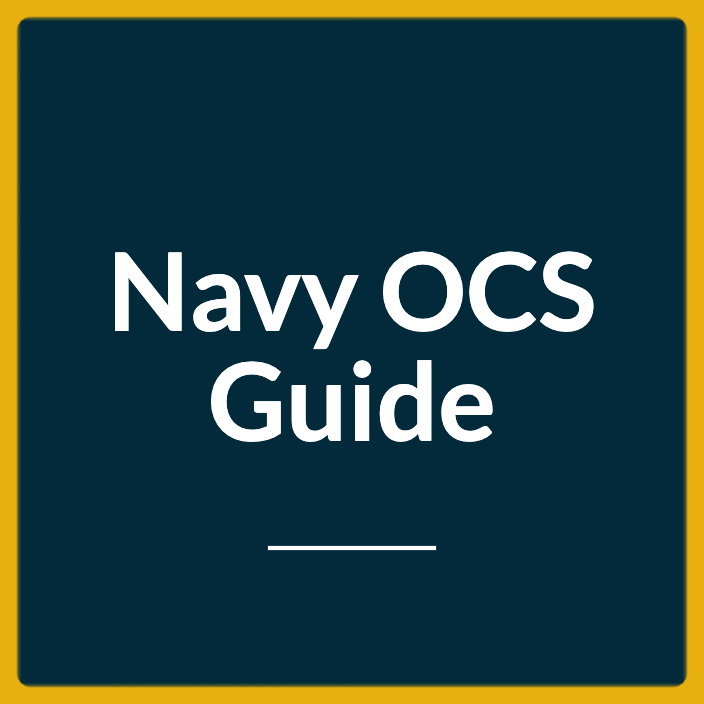Last Updated on August 30, 2023
This guide provides helpful information about the Aviation Selection Test Battery (ASTB) for those planning to join the Navy aviation team in Fiscal Year 2023.
The U.S. Navy requires the successful completion of the ASTB examination for only two Officer jobs: Naval Aviator (Pilot) and Naval Flight Officer (NFO).
Both these Navy Officer programs are highly competitive, so merely making the minimum qualification scores for any of the requirements will be insufficient for selection.
What is the Aviation Selection Test Battery?
The U.S. Navy, Marine Corps, and Coast Guard use the Aviation Selection Test Battery (ASTB) to choose applicants for officer aviation programs. Series E is the most recent version of the ASTB, and it has several technical improvements over earlier versions.

ASTB Subsections
The ASTB-E comprises six subtests. Three subtests combine to form the Officer Aptitude Rating (OAR), which is used for non-aviation officer training.
Although most examinees complete the whole test battery, those seeking admission to non-aviation officer programs can take only the OAR section of the examination, which comprises the Math Skills Test, Reading Comprehension Test, and Mechanical Comprehension Test.
The list below visually depicts the breakdown of tests included in the ASTB-E.
Math Skills Test (MST)**
Math Skills Test – Assesses the examinee’s ability to:
- Use mathematical methods to solve equations
- Understand fundamental ideas in arithmetic, algebra, geometry, and data analysis
The ASTB subtests measure arithmetic and algebra skills, as well as basic geometry. Equations and word problems are included in the exams. Some things demand a variable solution, while others are time and distance issues, and yet others involve the assessment of basic probabilities.
Basic mathematical operations, solving for variables, fractions, roots, exponents, and calculating angles, areas, and perimeters of geometric forms are all tested.
Reading Comprehension Test (RCT)**
Reading Comprehension Test – Assesses the capacity of the examinee to:
- Extract information from text passages
- Analyze written data and draw logical conclusions
ASTB examinees must derive meaning from text passages for reading comprehension items. Each item causes the examiner to determine which of the solution possibilities may be deduced from the paragraph itself.
Examinees must remember that while wrong response possibilities may appear to be ‘true,’ only one answer to each question may be determined simply from the information in the passage.
Mechanical Comprehension Test (MCT)**
Mechanical Comprehension Test -This test assesses the examinee’s ability to:
- See and comprehend the nature of physical interactions
- Solve practical mechanical concepts problems
Topics covered in the mechanical comprehension section of the ASTB include those found in an introductory high school physics course, as well as their application to a range of circumstances.
The questions in this section of the test assess candidates’ knowledge of gas and liquid concepts, as well as their comprehension of how these characteristics impact pressure, volume, and velocity.
The subtest also contains questions about engine components and performance, electrical concepts, gears, weight distribution, and the operation of small devices like pulleys and fulcrums.
Aviation and Nautical Information Test (ANIT)
Aviation and Nautical information Test – Measures the examinee’s ability to recall terminology and concepts related to naval duty and aviation.
The ANIT evaluates an examinee’s knowledge of aviation history, nautical terminology and procedures, and aviation-related topics, such as aircraft components, aerodynamic principles, and flying rules and regulations.
ANIT scores are the most easily improved by study of any ASTB subtest since they are primarily a test of knowledge rather than aptitude.
Examinees can prepare for this subtest by reading encyclopedias, FAA and civilian aviation publications, and handbooks and manuals that summarize fundamental piloting, navigation, and seamanship.
Naval Aviation Trait Facet Inventory (NATFI)
Naval Aviation Trait Facet Inventory – A personality questionnaire that assesses certain personality qualities that have been demonstrated to predict success in aviation at various phases of an aviator’s career.
Examinees must react to a series of paired sentences that depict how they may feel, think, or act in this portion of the ASTB.
Examinees are shown the following categories of statement pairings, one at a time:
A. When things get tough, I perform significantly less successfully.
B. I am occasionally late for appointments.
A. If someone relied on me, I would gladly commit my time and efforts.
B. I achieve more at work than most individuals.
The Examinee must choose the statement from each pair that best characterizes him or herself. This subtest does not require any preparation. Examinees should merely react honestly to each pair of statements.
Examinees do not recognize or declare that they would ever willfully engage in the activity depicted in these statements by approving statements on this assessment. This is a test of making tough decisions.
Performance-Based Measures Battery (PBM)
Performance-Based Measures—A series of tests based on processing speed, dexterity, and divided attention measuring:
- Aptitude for spatial orientation
- Listening ability that is dichotic
- Capability to do tracking duties with a stick-and-throttle set
- Capability to conduct many of these actions concurrently
Examinees are asked to answer directional orientation challenges, complete listening tests, and execute tracking tasks using a stick-and-throttle set in this battery.
Those who want to prepare for this subtest should solve practice mental rotation tasks and practice using flight simulator software.
** Part of the Officer Aptitude Rating (OAR)
Purpose of ASTB-E
The ASTB-E examines a variety of aptitudes and personal traits across a range of cognitive capacities, including arithmetic skills and aptitude, the capacity to extract meaning from written information, and familiarity with mechanical ideas and basic machines.
The ASTB-E also includes questions that measure a person’s knowledge of aviation and nautical terminology, familiarity with aircraft components and operation, understanding of basic aerodynamic concepts, and understanding of basic flying laws and regulations.
Performance on these battery components can be improved via study, and examinees with aircraft and maritime expertise often do well.
The Performance-Based Measures (PBM) Battery has been added to the ASTB-E, which examines the examinee’s capacity to think in three dimensions: physical dexterity, eye-hand coordination, and ability to divide attention among diverse activities.
In addition, the ASTB-E incorporates an assessment of personality characteristics related to aviation success, as well as the Naval Aviation Trait Facet Inventory (NATFI).
The ASTB-E’s components have all been effective predictors of training performance.
Examinees who enter the flight program with high levels of cognitive aptitude and psychomotor ability, background knowledge of aviation and nautical concepts, and certain personal characteristics are more likely to achieve higher grades in aviation training and complete the aviation training program successfully.
Test Administration
The total time necessary to take the ASTB-E varies from person to person.
The ASTB-E might take anything from 2 hours to 3 hours and 15 minutes to complete.
The OAR in APEX might take anything from 1 to 2 hours to complete.
The exam’s math problems are solved without the aid of a calculator; however, appropriate formulas are supplied. Each examinee is given a scrap paper on which to solve problems.
The results you got on your most recent test attempt will be considered your scores-of-record and will supersede all previous scores, regardless of the version used.
This is true even if some or all your prior scores were higher.
Individuals may only take the ASTB-E three times per lifetime. Those who wish to retake the test must wait 30 calendar days to schedule another one.
Navy ASTB Exam Requirements
These requirements are current as of May 2022, per the Navy Personnel Command. No updates have been issued so far.
Naval Aviator (Navy Pilot)—Designator 1390
Below are the minimum ASTB qualification scores for Navy Pilot applicants:
- Academic Qualification Rating (AQR): 4
- Pilot Flight Aptitude Rating (PFAR): 5
Naval Flight Officer (NFO)—Designator 1370
Below are the minimum ASTB qualification scores for NFO applicants:
- Academic Qualifications Rating (AQR): 4
- Flight Officer Flight Aptitude Rating (FOFAR): 5
Navy ASTB Score Descriptions
The combination of two scores is used to make aeronautical selection decisions. Pilots are chosen based on their AQR and PFAR scores, while Flight Officers are chosen based on their AQR and FOFAR ratings. These results are given in stanines (1 to 9).
Academic Qualifications Rating (AQR)
The Academic Qualifications Rating (AQR), which has a score range of 1 to 9, forecasts academic achievement in the Aviation Preflight Indoctrination (API).
Pilot Flight Aptitude Rating (PFAR)
Pilot Flight Aptitude Rating (PFAR), which has a score range of 1 to 9, forecasts the main flight performance of Student Naval Aviators (SNAs).
Flight Officer Flight Aptitude Rating (FOFAR)
The Flight Officer Aptitude Rating (FOFAR), which has a score range of 1 to 9, forecasts the main flight performance of Student Naval Flight Officers (SNFOs).
How to Prepare for the ASTB-E
Examinees who want to learn test tactics, review and practice arithmetic principles and problems, become acquainted with military history and aviation vocabulary, and practice pace on timed examinations might benefit from a variety of resources.
Examinees should try to prepare in all areas where they will be tested.
We only endorse this ASTB-E Test Preparation Guide. There are many available, but most of them are scams. This recommended ASTB-E Guide came from members of our community who successfully completed the exam. Save some time and money and just get this guide.
Sample ASTB-E Questions
You may download sample questions to help you prepare for the ASTB-E here: Download ASTB-E Sample Questions (Free & No-opt in required)
More Information
If you want more information about becoming a Naval Aviator or Naval Flight Officer, the next logical step is to contact a Naval Officer Recruiter.
Let us figure out how you can receive help from becoming a Navy Pilot or NFO—or if it is even the right career move for you.
Lastly, if you wish to fly Navy drones instead, check out the Navy Drone Pilot job.


